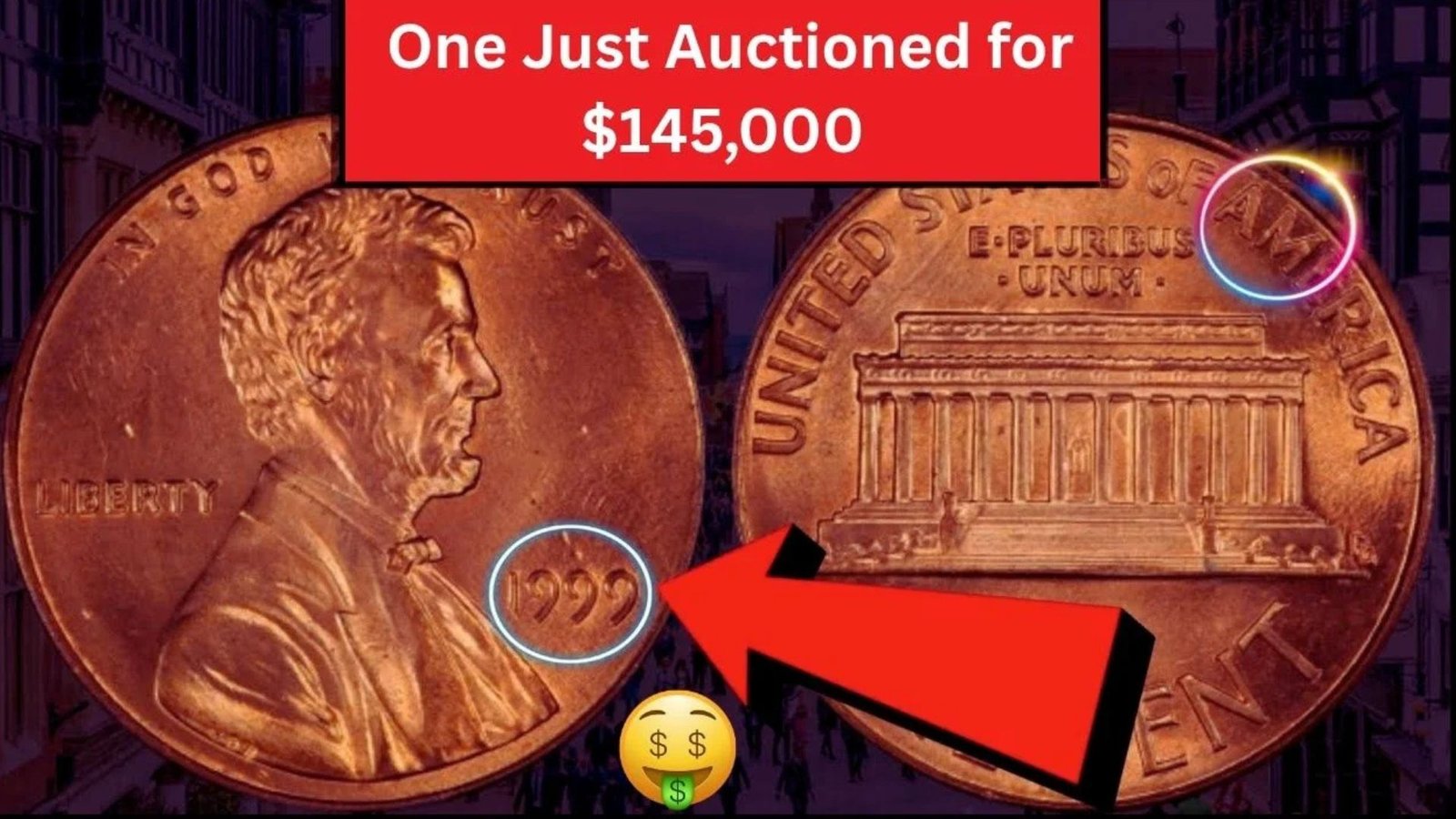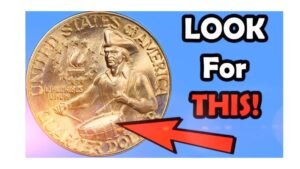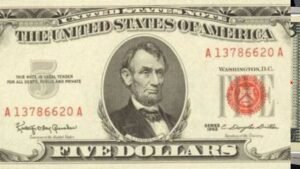Imagine finding a penny in your change that could be worth $145,000! The 1999 Wide AM Lincoln Penny, a rare coin with a unique minting error, recently sold for this jaw-dropping amount at auction. This penny, struck by the U.S. Mint in Philadelphia, is a collector’s treasure due to its distinct features. In this guide, we’ll show you how to identify this valuable penny, why it’s so special, and what to do if you find one in 2025. Start checking your coins—this could be your ticket to a fortune!
What Is the 1999 Wide AM Penny?
The Lincoln Memorial Penny, minted from 1959 to 2008, features Abraham Lincoln on the front (obverse) and the Lincoln Memorial on the back (reverse). In 1999, the U.S. Mint produced over 5.2 billion pennies in Philadelphia alone, making most worth just one cent. However, a rare error occurred when a proof die, meant for special collector coins, was accidentally used for regular pennies. This created the 1999 Wide AM Penny, where the letters “A” and “M” in “AMERICA” on the reverse have a noticeable gap, unlike the standard “Close AM” design where they nearly touch.
Why Is the 1999 Wide AM Penny Valuable?
This penny’s value comes from several factors:
- Minting Error: The use of a proof die for circulation coins was a mistake, making these pennies rare.
- Low Quantity: Experts estimate only 5,000–10,000 Wide AM pennies exist, a tiny fraction of the billions minted.
- Condition: Coins in mint state (no wear, graded MS-66 or higher) can fetch thousands, with one selling for $145,000 in 2024.
- Collector Appeal: The unique design and rarity make it a must-have for numismatists.
How to Identify the 1999 Wide AM Penny
Spotting this rare penny is straightforward with the right steps. Here’s how to check your coins:
Step 1: Confirm the Year and Mint Mark
Look at the front of the penny for the year “1999.” Check below the date for a mint mark. The Wide AM error only occurs on Philadelphia-minted pennies, which have no mint mark. If you see a “D” (Denver) or “S” (San Francisco), it’s not the rare variety.
Step 2: Examine the Reverse
Flip the coin to the back, where “AMERICA” is written around the Lincoln Memorial. Use a magnifying glass (5x or higher) to look at the letters “A” and “M” in “AMERICA.” In the Wide AM variety, there’s a clear gap between the “A” and “M.” In the common Close AM variety, the letters nearly touch.
Step 3: Check the Designer’s Initials
Look for the initials “FG” (for designer Frank Gasparro) near the bottom right of the Lincoln Memorial. On Wide AM pennies, the “FG” is farther from the memorial than on regular pennies. This is a key clue to confirm the error.
Step 4: Assess the Condition
Coins in mint condition (no scratches or wear) are worth the most. Check for sharp details in Lincoln’s portrait and the memorial’s columns. Professional grading services like PCGS or NGC can confirm the coin’s condition, with MS-66 or higher grades fetching top prices.
| Feature | Details | Value (2025) |
|---|---|---|
| Year | 1999 | – |
| Mint Mark | None (Philadelphia) | – |
| Error | Wide AM (Gap between A and M) | $100-$145,000 (MS-66/MS-68) |
| FG Initials | Farther from Lincoln Memorial | – |
| Condition | Mint State (MS-66 or higher) | Up to $145,000 |
Where to Find the 1999 Wide AM Penny
This rare penny could be hiding in:
- Pocket Change: Check coins from stores, vending machines, or your wallet. One was found in McDonald’s change in 2023!
- Coin Rolls: Buy rolls of pennies from banks and search through them.
- Change Jars: Old piggy banks or jars might hold this treasure.
- Coin Shows: Visit dealers or shows for rare finds or appraisals.
What to Do If You Find a Wide AM Penny
If you think you’ve found a 1999 Wide AM Penny:
- Don’t Clean It: Cleaning can damage the coin and lower its value.
- Handle Carefully: Use gloves or a coin flip to avoid scratches.
- Get It Graded: Send it to PCGS or NGC for authentication and grading. A 1999 Wide AM Penny graded MS-66 sold for $145,000 in 2024.
- Sell Smart: Work with reputable dealers, auction houses like Heritage Auctions, or platforms like eBay after grading.
Tips for Coin Hunting in 2025
To increase your chances of finding this penny:
- Check Every 1999 Penny: Focus on Philadelphia-minted coins (no mint mark).
- Use Magnification: A 5x magnifier or phone camera zoom helps spot the Wide AM and FG initials.
- Join Coin Communities: Forums like CoinTalk or apps like Coin ID Scanner share tips and photos.
- Avoid Fakes: Counterfeits exist, so professional grading is essential.
Debunking the $3.2 Million Myth
Some sources claim a 1999 penny sold for $3.2 million, but no verified record supports this. The highest confirmed sale was $145,000 for an MS-66 Wide AM penny in 2024, with earlier sales reaching $138,000 in 2006. Always check with trusted sources like PCGS or NGC for accurate values.
Conclusion
The 1999 Wide AM Lincoln Penny is proof that a single cent can be worth a fortune. With its rare minting error and a recent auction sale of $145,000, this coin is a collector’s dream. By checking the year, mint mark, “AM” spacing, and FG initials, you could spot this treasure in your change. Handle it carefully, get it graded, and connect with reputable buyers to cash in. Start searching your coins today—your next penny could be worth thousands!
FAQs
What makes the 1999 Wide AM Penny valuable?
The Wide AM Penny is rare due to a minting error where a proof die was used for regular coins, creating a gap between the “A” and “M” in “AMERICA.” Only a few thousand exist.
How do I spot a 1999 Wide AM Penny?
Check for the year “1999” with no mint mark. On the reverse, look for a gap between the “A” and “M” in “AMERICA” and FG initials farther from the Lincoln Memorial.
How much is the 1999 Wide AM Penny worth?
In circulated condition, it’s worth $100-$200. In mint state (MS-66 or higher), it can fetch $1,000-$145,000, depending on grading.
Where can I find this rare penny?
Look in pocket change, bank coin rolls, change jars, or at coin shows. Some have been found in everyday transactions, like fast-food change.
Should I clean my penny if I find one?
No, cleaning damages the coin and reduces its value. Store it in a protective holder and get it graded by PCGS or NGC.




